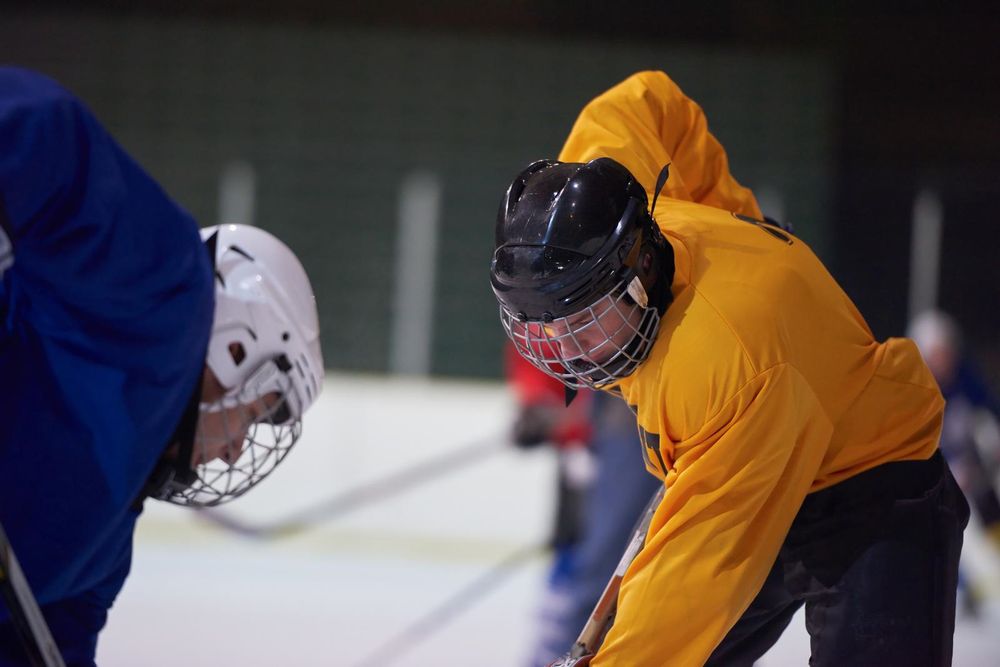In the fast-paced and physically demanding sport of hockey, the safety and protection of players is of utmost importance.
Shoulder pads, an essential piece of equipment, provide crucial defense against on-ice impacts, safeguarding the shoulders, collarbone, chest, back, and upper biceps.
Designed with precision and care, they absorb impacts and reduce the risk of injuries, ensuring the well-being of players during intense gameplay.
Whether you’re a beginner or a seasoned professional, shoulder pads are a must-have to enhance your performance and provide invaluable protection on the ice.
With customization options available for a comfortable and lightweight fit, choosing the right shoulder pads involves considering position-specific needs, size, and player preferences.
Despite price variations, shoulder pads remain an essential investment for players at all levels, providing peace of mind and enabling players to focus on the game.
Importance of Shoulder Pads
Protecting players from on-ice impacts, shoulder pads are crucial for ensuring the safety and well-being of hockey players.
One of the key advantages of shoulder pads is the presence of padded shoulder caps. These caps provide additional protection to the shoulder joint, reducing the risk of injuries such as dislocations and separations.
In addition to the protective aspect, shoulder pads also offer benefits of ventilation. Many shoulder pads feature strategically placed mesh panels and vents that allow for better air circulation, keeping the player cool and comfortable during intense gameplay. The ventilation not only helps regulate body temperature but also prevents excessive sweating, reducing the risk of skin irritation and discomfort.
Components of Shoulder Pads
Shoulder pads are composed of several key components that work together to provide essential protection for hockey players on the ice. These components include shoulder caps, bicep pads, chest protector, and back protector. Each component has its own role in safeguarding different parts of the upper body.
The shoulder caps protect the shoulders and collarbone, while the bicep pads provide coverage for the upper biceps. The chest protector shields the chest, and the back protector offers protection for the back.
Different types of shoulder pad materials can be used, such as high-density foam, plastic inserts, and breathable fabrics. The choice of materials affects the level of protection, comfort, and weight of the shoulder pads.
When it comes to shoulder pad designs, there are pros and cons to consider. Bulkier designs offer increased protection, but they can restrict mobility.
On the other hand, lightweight and slim designs provide better mobility but may sacrifice some protection. It’s essential for players to choose shoulder pads that suit their position, playing style, and personal preferences.
| Component | Purpose | Pros | Cons |
|---|---|---|---|
| Shoulder caps | Protect shoulders | Enhanced impact absorption | May restrict mobility |
| Bicep pads | Protect upper biceps | Added coverage | May limit arm movement |
| Chest protector | Shield chest | Increased protection | Bulkier, may limit mobility |
| Back protector | Safeguard the back | Added protection | Can be restrictive during movement |
Table: Components of Shoulder Pads
Customization for Optimal Performance
To enhance performance on the ice, hockey players often customize their shoulder pads to ensure a comfortable and lightweight fit that maximizes protection during intense gameplay. Customization benefits players by allowing them to modify their shoulder pads according to their specific needs and preferences.
This customization can involve professional modifications made by equipment managers or the players themselves. Professional modifications may include alterations to the shoulder caps, padding, or straps to provide a more personalized and optimized fit.
Lifespan and Care Tips
When it comes to the lifespan and care of shoulder pads, proper maintenance and regular inspection are essential for ensuring optimal performance and longevity.
Caring for your shoulder pads involves a few simple steps that can help extend their lifespan.
First, it is important to regularly inspect the pads for any signs of wear and tear, such as frayed straps or loose stitching. If any damage is found, it should be repaired promptly to prevent further deterioration.
Additionally, cleaning the pads regularly is crucial to remove sweat, dirt, and odor. This can be done by hand-washing the pads with mild soap and water, and allowing them to air dry completely.
Lastly, storing the shoulder pads in a cool and dry place, away from direct sunlight, can help prevent damage from humidity and UV rays.
Choosing the Right Shoulder Pads
For optimal protection and performance on the ice, hockey players must carefully select shoulder pads that cater to their specific positional needs and preferences.
Sizing considerations play a crucial role in choosing the right shoulder pads. Proper sizing based on chest circumference ensures a snug and secure fit, preventing the pads from shifting during gameplay.
Additionally, hockey players should pay attention to the shoulder pad materials. Common materials include high-density foam padding and plastic inserts, which offer enhanced protection against impacts.
Different brands offer a variety of styles and fits to accommodate player preferences. Forwards often prefer lightweight and slim designs for better mobility, while defensemen opt for bulkier pads for increased protection during blocking and checking.
Cost and Value of Shoulder Pads
While cost may vary, the value of shoulder pads for hockey players cannot be underestimated. When considering the cost of shoulder pads, it is important to compare the prices of different brands and models.
Beginners can find shoulder pads for under $50, while higher-end options with additional features can range from $100 to $200. The price variation is due to factors such as the inclusion of plastic inserts and higher-density foam padding.
It is essential to consider durability factors when assessing the value of shoulder pads. With proper care, shoulder pads can last up to 10 years. However, professional players may need to replace them more frequently due to regular wear and tear. Sweat and moisture can also impact the durability of velcro straps, but inexpensive replacements are available.
Ultimately, regardless of the cost, shoulder pads provide crucial protection for hockey players on the ice.
Frequently Asked Questions
What Are Some Common Modifications That NHL Players Make to Their Shoulder Pads for a Customized Fit?
Shoulder pad customization is common among NHL players, allowing for a personalized and comfortable fit. Modified shoulder pads enhance performance and provide optimal protection during intense gameplay, contributing to a player’s success on the ice.
Can Shoulder Pads Be Repaired if They Become Damaged or Worn Out?
Shoulder pads can be repaired if they become damaged or worn out. Common repair options include replacing worn-out Velcro straps and fixing tears or cracks in the padding. Regular maintenance and proper care can help prevent shoulder pad damage.
Are There Any Specific Cleaning Instructions for Shoulder Pads to Maintain Their Longevity?
Cleaning instructions for shoulder pads include wiping them down with a damp cloth after each use and allowing them to air dry. Avoid machine washing or submerging in water to maintain their longevity. Regularly inspect the pads for any signs of wear or damage.
Are There Any Alternative Options to Traditional Shoulder Pads for Players Who Prefer a Different Style or Fit?
Alternative options to traditional shoulder pads for players who prefer a different style or fit include shoulder harnesses, which provide support without the bulk of pads, and shoulder caps, which only cover the shoulder area. These options cater to individual preferences and offer different levels of protection.
Can Shoulder Pads Be Used for Other Sports or Activities, or Are They Specifically Designed for Hockey?
Shoulder pads are specifically designed for contact sports like hockey, where they offer essential protection to players. While they may not be suitable for all sports or activities, they are necessary for contact sports that involve potential impacts and collisions.
Conclusion
In conclusion, shoulder pads are an essential piece of equipment for hockey players, providing crucial protection against on-ice impacts. With their four main components and customization options, they offer comfort and enhanced performance for players at all levels.
Regular care and maintenance can extend their lifespan, ensuring long-lasting use.
Despite price variations, shoulder pads are a valuable investment, offering invaluable protection and safety on the ice.
So, whether you’re a beginner or a professional, don’t underestimate the importance of shoulder pads in the game of hockey.









